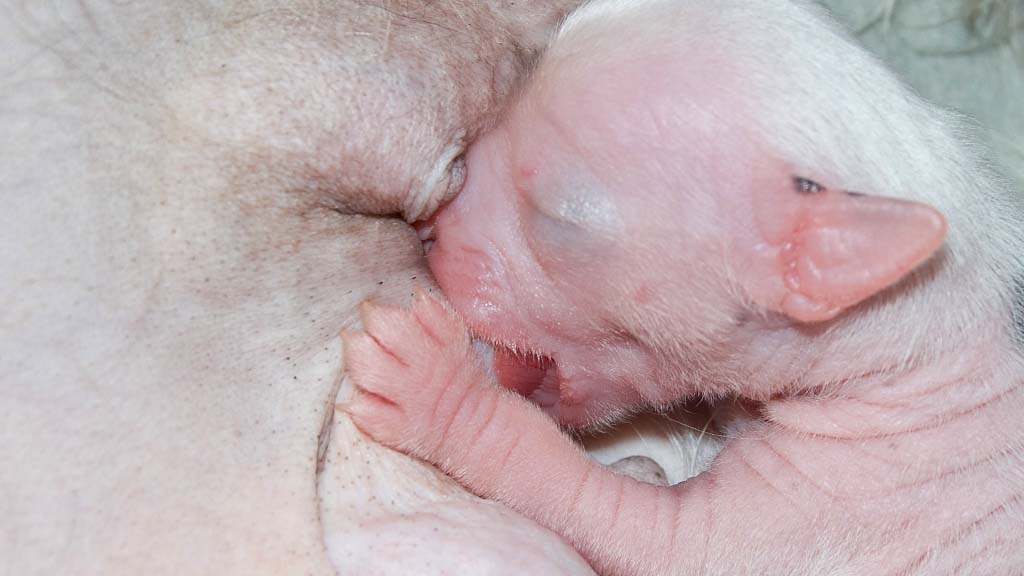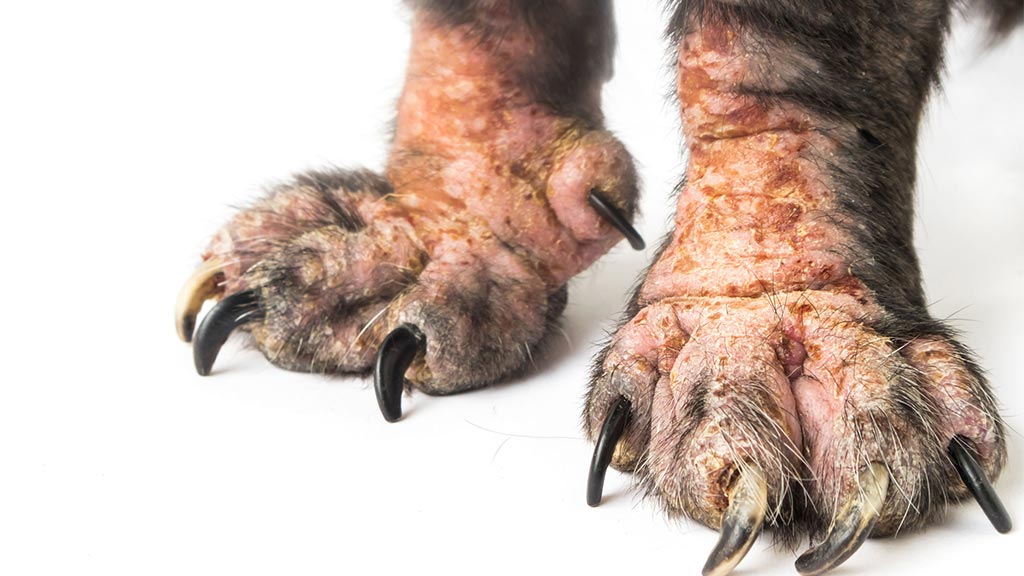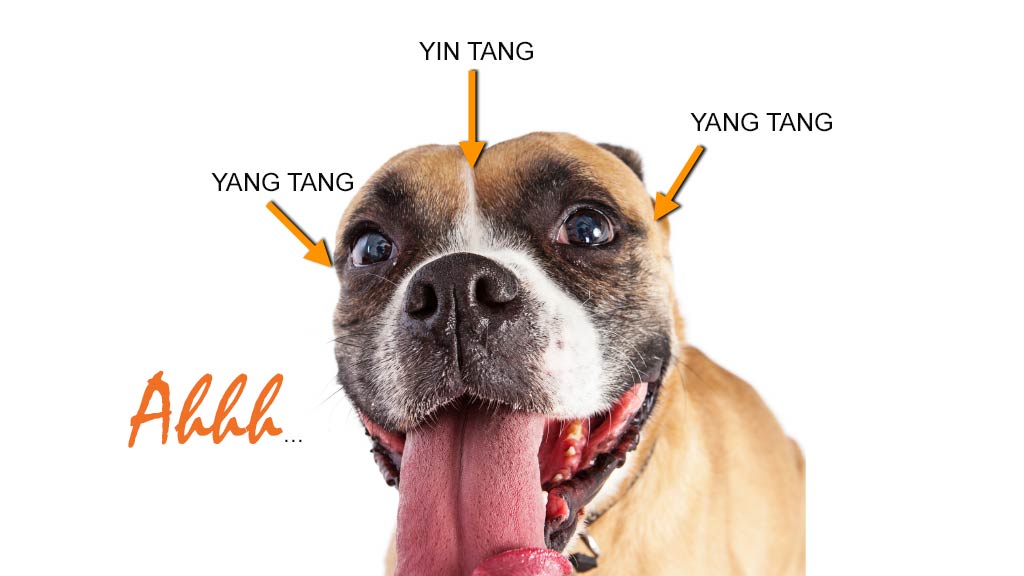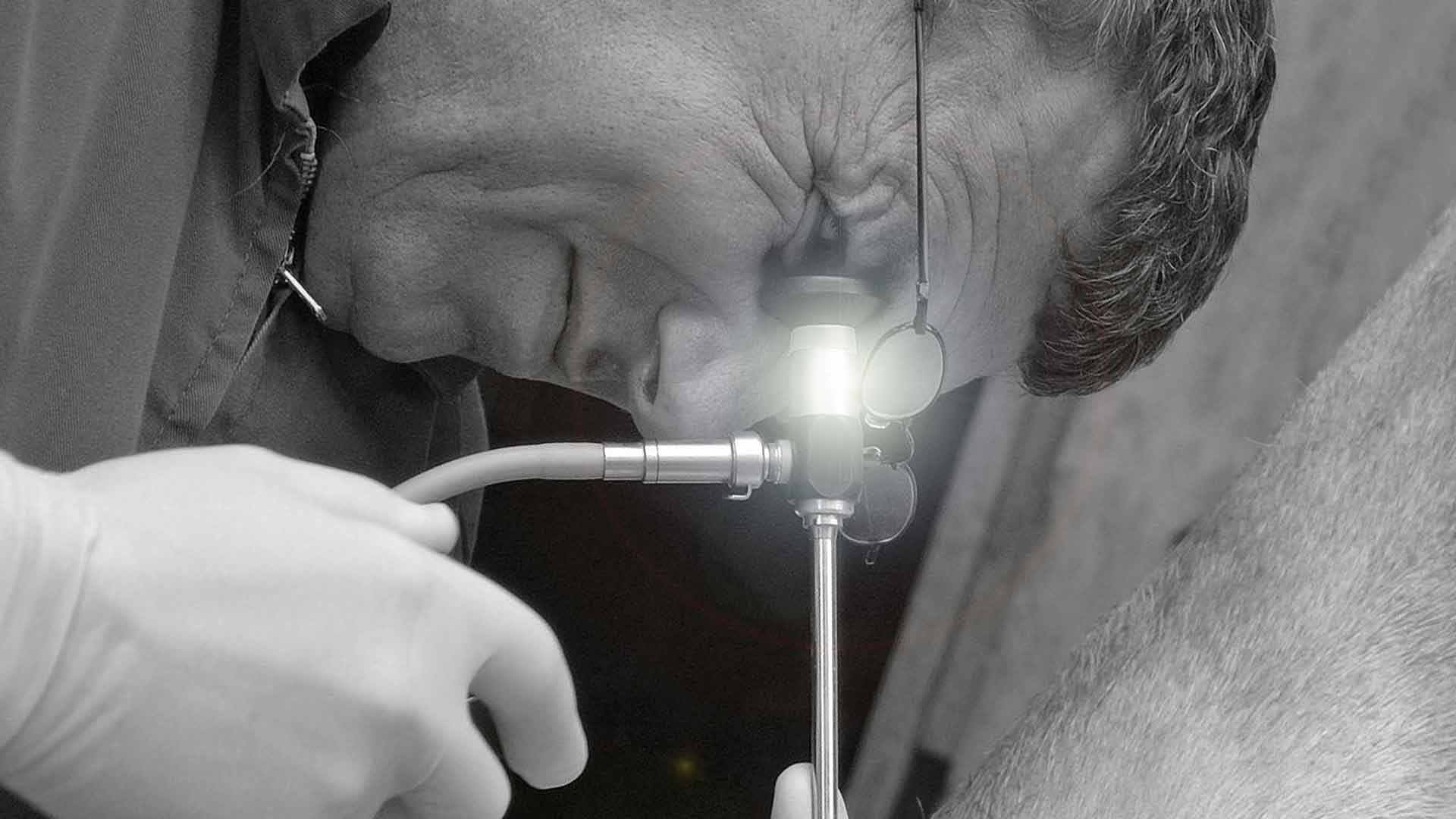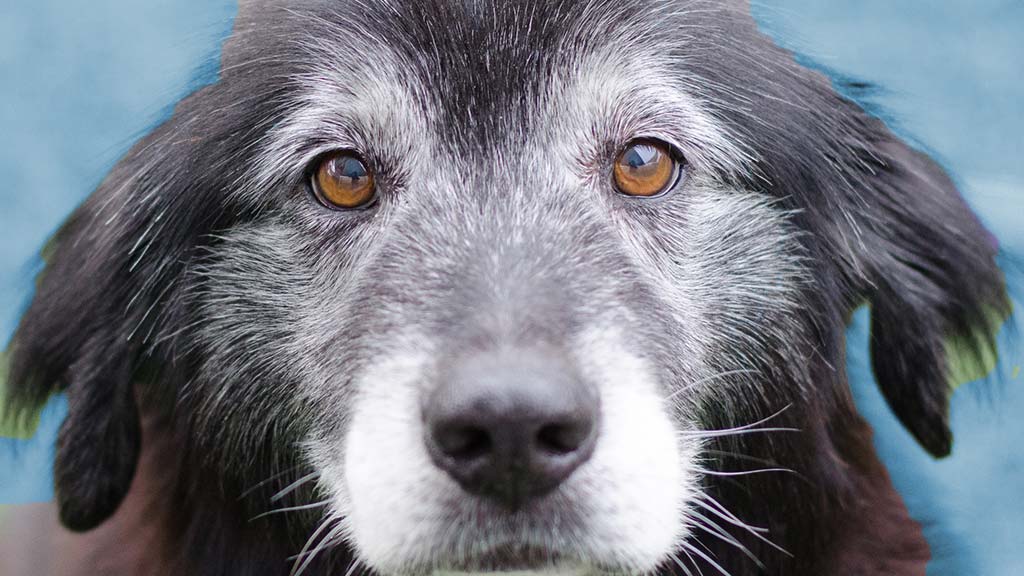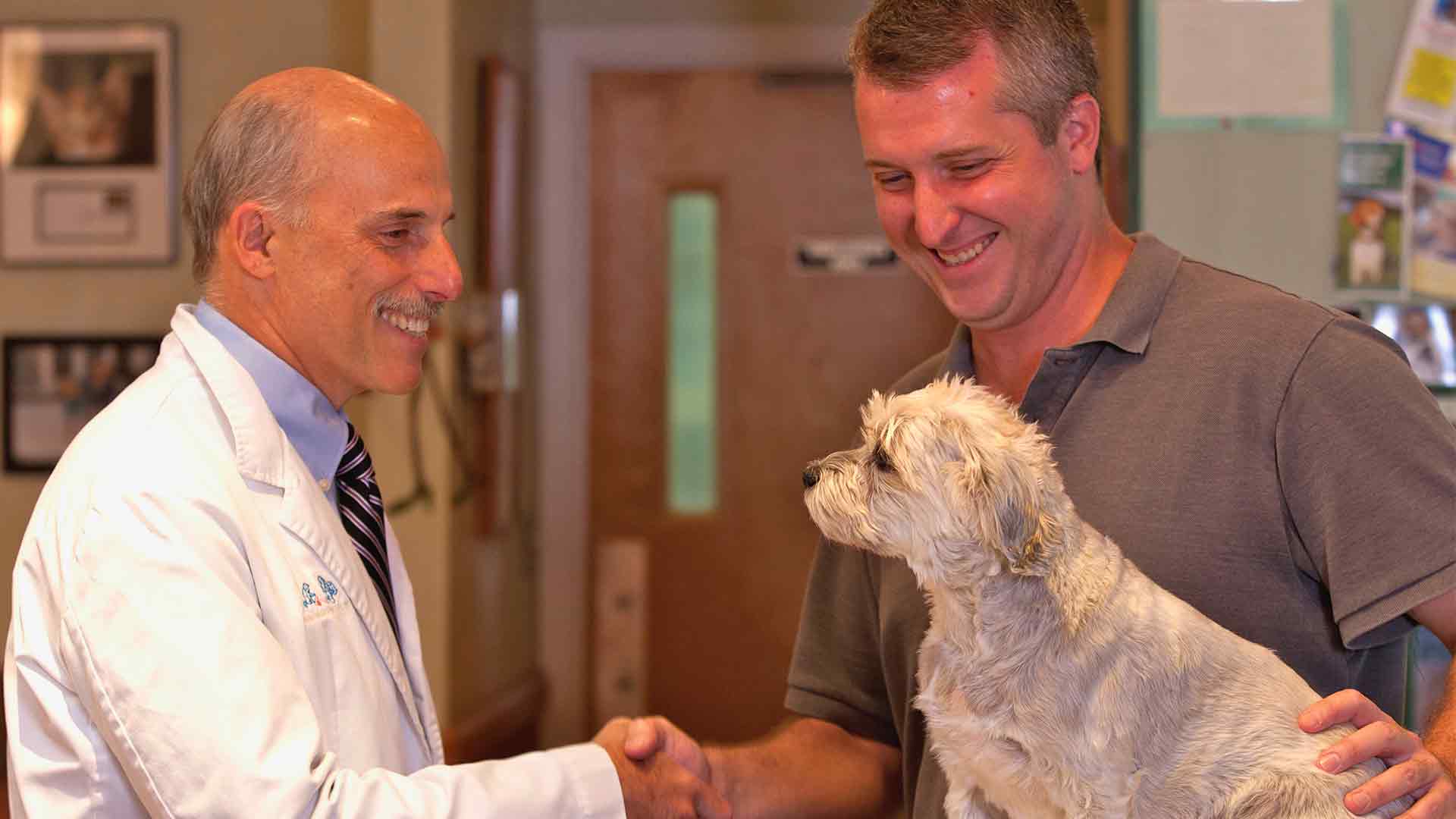Animal Medical of New City answers all your questions about reproduction in dogs.
At what age can dogs reproduce?
A dog’s fertility is marked by the start of her estrus cycle or the ‘heat cycle‘. In general, smaller dogs have their first estrus cycle closer to six months of age, while larger dogs take a bit longer to mature. All are reproductive by 15 months. Dogs have two estrus cycles per year, each lasting two-to-three weeks.
How can I tell if my dog is in heat?
A female dog in heat will have a swollen vulva with bleeding or discharge. She may lick her backend more, urinate more frequently, and exhibit behavioral changes like roaming, humping or being more friendly to other dogs.
Meet the Medical Team
If my dog is in heat, why won’t she accept males?
There are four stages of the heat cycle, but the female is usually only receptive to males in the second. The four stages of the heat cycle are:
Proestrus
Proestrus is marked by the swelling of the vulva, bleeding or discharge, and a change in behavior. Males will be attracted to the female, but she won’t permit mounting. Proestrus lasts a little over a week.
Estrus
Estrus is the mating period of a dog. It last 5-10 days. During estrus, blood flow slows, the dog’s discharge turns more watery, and the production of eggs occurs. After ovulation, eggs usually require a few days to fully mature and reach maximum fertility. Because there is a window of time between ovulation and the maturation of eggs, breeders sometimes schedule two mating sessions, one near the beginning and one near the end of the estrus cycle, to ensure fertilization.
Diestrus
The diestrus cycle marks internal changes to the uterine wall that favors implantation of fertilized eggs, but outwardly, it appears as though the heat cycle is winding down. The amount of vulvar discharge decreases and behavior begins to normalize.
Anestrus
This is the resting phase of the reproductive cycle.
Why do dogs stick together when mating?
Those that have never seen a male and female dog copulate are alarmed to see that they get stuck together after the male mounts the female and has ejaculated. This is called a copulatory tie. It is normal in most canine species including wolves and foxes. The copulary tie occurs because the tip of the male’s penis swells, preventing the male from pulling out. This copulatory tie is thought to improve mating success because it plugs the opening of the vulva and keeps the maximum amount of semen inside the female until the sperm have had time to fertilize the eggs. The copulatory tie can last 5-40 minutes.
Is it true that a female dog can become pregnant by more than one male?
Yes. During the estrus stage, the female can mate with several males and hold viable ejaculate inside for up to a week. This ensures maximum fertilization of her eggs as none are fully mature immediately after ovulation. As the eggs mature, any one of them can be fertilized by the different male’s spermatazoa meaning that you can have one litter of puppies sired by one or more male dogs.

Female dogs can mate with multiple partners during a heat cycle and produce offspring from some or all of them!
How can I tell if my dog is pregnant?
The best way to tell if your dog is pregnant is to get her blood tested 30 or more days after the estrus cycle. Blood tests look for the presence of a hormone known as relaxin which is only produced during pregnancy. Ultrasound and X-ray are also effective diagnostic tools, but are best used later in pregnancy when they can also determine the number and the health of the puppies.
Visual signs that your dog is pregnant include:
Week 1 and 2: Usually no signs, but sometimes a decrease in appetite and restlessness if the dog is experiencing morning sickness
Week 3: Increase in appetite, enlargement of the nipples, friendlier behavior
Week 4: Decrease in activity, perhaps clear vulval discharge
Week 5 and 6: Enlarged abdomen, increased urination
Week 7: Marked change in the dog’s appetite as the growing puppies push against her stomach and prevent her from eating large meals
Week 8: Beginning of lactation
Week 9: Dog prepares to give birth. She expresses restlessness and sometimes irritable behavior.
How long do dogs stay pregnant?
The gestation period for dogs is little more than two months or 62 -64 days.
How do I know when my dog will give birth?
Puppies are born 62-64 days after fertilization. During the last 48-24 hours prior to delivery, the dog will exhibit the following signs:
Decrease in body temperature: Normal temperature for a dog should be between 101 and 103, but the temperature of a dog getting ready to go into labor will drop to 98 degrees and remain there up to the point of contractions.
Little-to-no appetite: 24-48 hours prior to delivery, pregnant females refuse food. Because the puppies inside of her are moving towards the birth canal, they may exert pressure on the stomach or the intestines causing the dog to vomit or to have an especially large bowel movement.
Panting: Dogs pant when they are hot, stressed, or in pain. As the dog nears the point of delivering her pups, contractions begin and cause her to pant.
Restlessness and anxiety: Dogs will look and behave restlessly.
Shivering: Right before contractions begin in earnest, the dog’s temperature will rise. This causes the dog to shiver. Shivering, in the context of the other signs described here, is a sign the the birth process is about to begin.
Contractions: The dog’s abdominal muscles will contract to push out the puppies. You’ll be able to visibly see these contractions and relaxations as well as feel them if you place your hand on her sides.
Pushing: Along with the contractions, your dog will start to push. The behavior looks similar to what it looks like when the dog is defecating, though she won’t be standing.
Emergence of puppy: Because the amniotic sac is sometimes broken during the birthing process, contractions may produce a puppy inside the amniotic sac, or one without the other. It’s important that for every puppy born, there is also an amniotic sac, but because the dog usually eats the amniotic sac, the sacs can’t always be found in the whelping bed.
How many puppies will my dog have?
Dogs usually have between 1 and 12 puppies with 5-6 puppies being the average number across all dogs. Dogs between 2-5 years of age tend to have the largest litters. As dogs age, the number of offspring they have declines. The world record for the largest litter is 24 puppies.
When is the right time to spay a dog?
Traditionally, all dogs were spayed or neutered around 6 months of age before their first heat cycle to reduce the risk of certain cancers and unwanted dog pregnancies. Recent research has shown that spaying or neutering a dog too early, especially larger breed dogs, can come with its own set of issues. The decision to spay sooner or later is a complex decision. Please reach out to us for assistance in making the decision for your pet.

